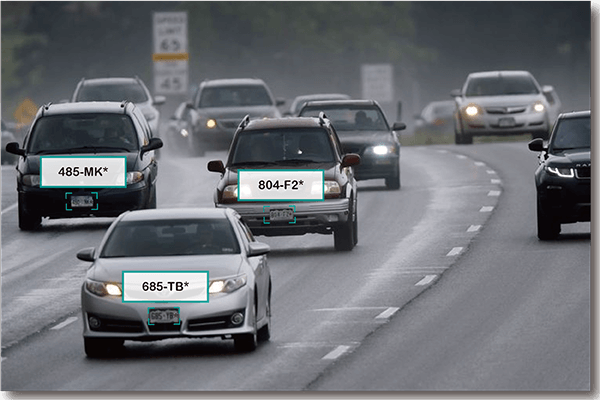
What is the license plate recognition system?
It is a technology that uses optical character recognition (OCR) to obtain the vehicle position on the image and then reads the vehicle license plate data; it is the fundamental operation of license plate recognition. In the actual application, license plate recognition must automate to have commercial value. Therefore, it is generally called automatic license plate recognition. There are two English terms: ANPR (Automatic Number Plate Recognition) and ALPR (Automatic License Plate Recognition).
History of Automatic License Plate Recognition
ALPR was invented in 1976 at the Police Scientific Development Branch in Britain. Prototype systems were working by 1979, and contracts were awarded to produce industrial systems, first at EMI Electronics, and then at Computer Recognition Systems (CRS, now part of Jenoptik) in Wokingham, UK. Early trial systems were deployed on the A1 road and at the Dartford Tunnel. The first arrest through detection of a stolen car was made in 1981. However, ANPR did not become widely used until new developments in cheaper and easier to use software were pioneered during the 1990s. The collection of ANPR data for future use (i.e., in solving then-unidentified crimes) was documented in the early 2000s. The first documented case of ANPR being used to help solve a murder occurred in November 2005, in Bradford, UK, where ANPR played a vital role in locating and subsequently convicting killers of Sharon Beshenivsky.
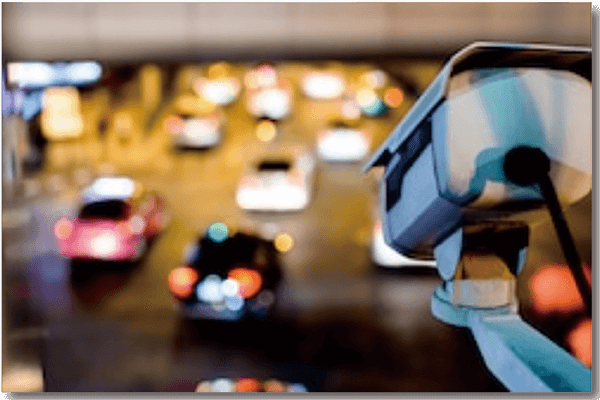
What are the factors that affect the accuracy of Automatic License Plate Recognition?
- Vehicle speed:
There is a big difference in the camera setting required for license plate recognition between high-speed moving vehicles and stationary vehicles. If the camera shutter sets a slower speed for a high-speed car, the image may be blurred and cause the recognition software cannot read. Shutter speeds of 1/500 of a second can cope with traffic moving up to 40 mph (64 km/h) and 1/250 of a second up to 5 mph (8 km/h). In addition, in slow-moving traffic, or when the camera is at a lower level and the vehicle is at an angle approaching the camera, the shutter speed does not need to be so fast. - Light condition:
Image contrast is the critical factor for the accuracy recognition of license plates. The higher the contrast is, the higher the correct rate of the license plate identifies. Therefore, proper ambient lighting can produce excellent contrast images of the license plate, which is also the first step to construct a license plate recognition system. Too much light will cause the image to be overexposed, and too dark light will produce too much noise, both of which are not conducive to improving the contrast. So the camera must adjust the shutter speed for the day and night; meanwhile, it needs to add infrared light or white light at night as illumination compensation. Generally speaking, the license plate recognition accuracy of black and white images is higher than that of color images. Therefore, it recommends using a black and white camera for license plate recognition. - Sharp images:
Out of focus, blurry images, overexposure, reflections, or shadows result in poor lighting and low contrast. These factors that affect the clarity of images will highly reduce the accuracy of license plate recognition. - Shooting angle:
License plate recognition has certain physical limitations. The image pixel of the license plate number is too low or and the angle of view is too large will cause recognition errors. The acceptable pixel range of commercially available recognition software is about 16-60 pixels, the horizontal depression angle is about 20-45°, and the license plate offset angle is about 5°~10°. - National License Plate Numbers:
License plates between countries or states use different fonts, vehicle number colors, and background colors. These factors will affect the correctness and accuracy of license plate recognition. Therefore, individual countries often require different license plate recognition engines. (Extended reading:See mobile ALPR/ANPR video)
The functions and applications of Automatic license plate recognition
Currently, license plate recognition widely applies in parking lot automation management, community and building parking access control, and traffic law enforcement. We describe the benefits of license plate recognition for these applications as follows.
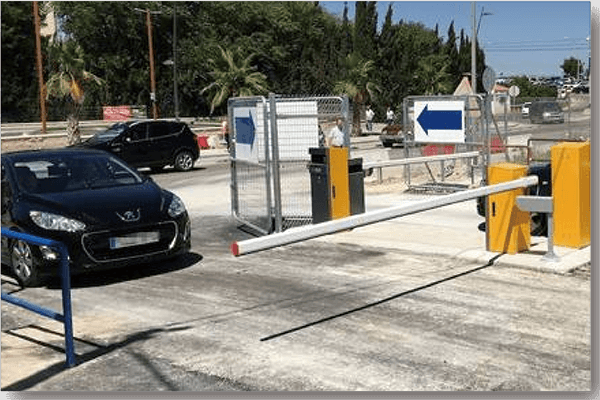
1. The parking lot automation management
- Full automation reduces labor costs, improves competitiveness, and increases profits.
- Eliminate management loopholes and guard self-theft; the license plate number is the vehicle’s only ID number, and there are video recordings and records of vehicle entry and exit times. It is difficult for management personnel to exploit loopholes to profit from a vehicle that needs to collect money.
- Since no need to repeatedly purchase a large number of magnetic cards, it saves costs, energy-saving, and environmental protection.
- Avoid inconvenience to customers caused by the loss of magnetic induction buckle.
- Avoid the loss of the owner caused by the copy of the magnetic induction buckle.
- There is no need to roll down the window to sense when entering or departing the gate. Make it more convenient for customers.
- Provide a large amount of parking record data, and the management can formulate parking management strategies and adjustments based on data analysis.
(Extended reading:How to plan a fully automatic toll collection control system of parking lot?)
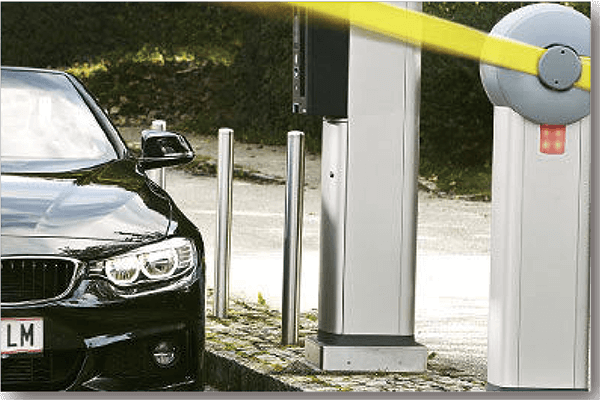
2. The community and building parking access control
- The parking spaces are not easy to be occupied by people. Besides, there are video recordings and time records of vehicles when entering and exiting. Greatly increase the safety of the community and building entry and exit control.
- Avoid the trouble of losing, copying, or lending the remote control or induction magnetic buckle to outsiders. Eliminate blind spots in management.
- It saves the cost of purchasing magnetic keys or remote controls.
- The gate can open and close during vehicles moving because of long-distance license plate recognition. It can save time for parking.
- No need to roll down the car window to sense, avoid the inconvenience of getting wet on rainy days.
(Extended reading:Dual recognition car park access control system)
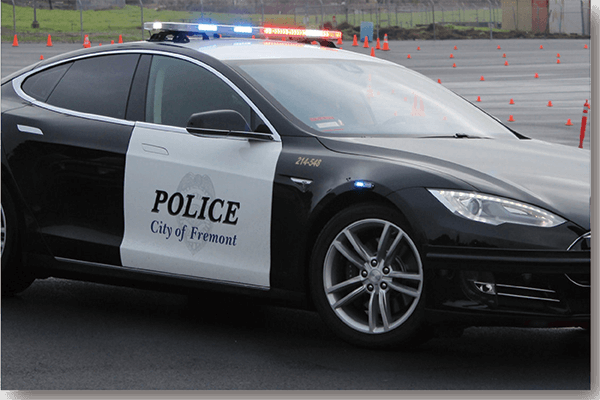
3. Traffic law enforcement:
ANPR is used by police forces around the world for law enforcement purposes. There are two main ways to use:
- Set up a fixed camera on the road:
It can use existing closed-circuit television (CCTV), road-rule enforcement cameras, or cameras specifically designed for the ANPR/ALPR tasks. Traffic law enforcement including:-
- Capturing over speeding cars via travel time journey measurement.
- The average speed of the road section in a specific period has been obtained via the travel time journey of vehicle.
- Checking if a vehicle is licensed or registered.
- Tracing the cause of the accident.
- The driving path of the hit-and-run vehicle in a traffic accident.
- Capturing over speeding cars via travel time journey measurement.
Meanwhile, it is also used for electronic toll collection on pay-per-use roads and as a method for cataloging the movements and flow of traffic.
(Extended reading:Vehicle Travel Journey Time Measurement) -
- Install a Mobile ALPR system in police cars:
At present, police forces often use hand-held license plate recognition to inspect vehicles. This method is suitable for fixed-point and timed inspections. It is passive and has its limitations in inspection speed, effectiveness, and manpower. Using ANPR equipped police car can avoid the shortcomings stated in the former. The police cars are always on duty. When a police car is driving on the road, the mobile license plate recognition (Mobile ALPR) system will actively recognize the license plate of the car parking on the roadside. It can execute a large number of license plate recognition and find illegal vehicles for a long time.
(Extended reading:Mobile ALPR/ANPR System)
Disadvantages of license plate recognition system
No system can be perfect. Of course, the license plate recognition system also has a few shortcomings, such as dirty license plates, wrong angle of entry, or heavy rain, etc. These conditions will cause the license plate to be unrecognizable. In general, the advantages of automatic license plate recognition have far outweighed the disadvantages.
